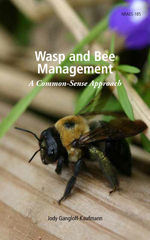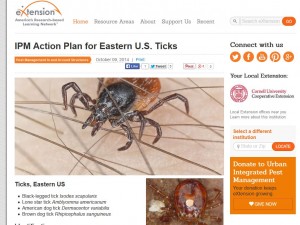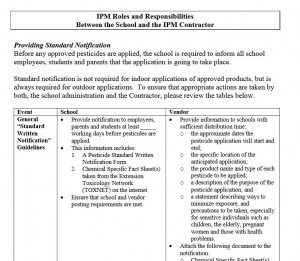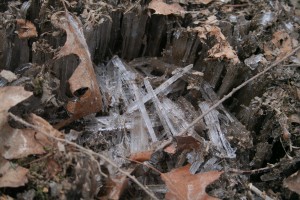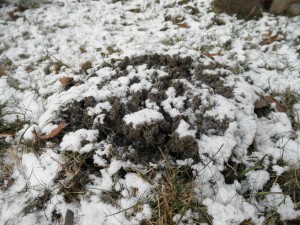The IPM Resources menu on the Best Management Practices for School IPM website provides ‘tools’ to help practitioners, experienced or new, practice IPM. And that’s the point.
Integrated Pest Management uses science- based knowledge to reduce pest problems. But as good as your practices might be, communication between custodians, groundskeepers, school staff, teachers and administrators, as well as the school board, and greater community is crucial. As with students, pest management works best when everyone is ‘on board’.
From our experiences in schools, and discussions with school staff and pesticide control officers, we created a list of resources to help in the everyday practice and that important cooperative effort.
General IPM:
Action Thresholds in School IPM Programs
Basis Steps in IPM Implementation
Colorado Coalition School IPM Policy Statement Template
University of California IPM: A curriculum for Early Care and Education Programs
EPA Citizen’s Guide to Pest Control and Pesticide Safety
EPA Pest Control in the School Environment: Adopting IPM
IPM for Pennsylvania Schools: A How-To Manual
IPM for School Administrators and Principals
Notice of Pesticide Application
Pesticide Application Record Form
Integrated Pest Management Literacy Plan for K-12 Education
Simple Inspection Form (generic indoor or outdoor)
Long-Term Management of Structural Squirrel and Bat Problems.
Next time, we’ll focus on Resources specific to Indoor Pest Management.




